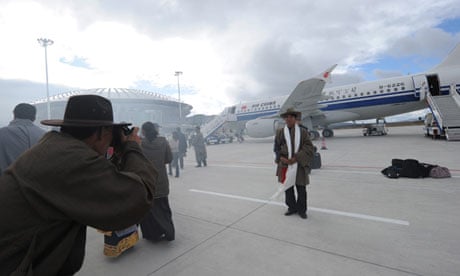China has begun flight operations at the world's highest civilian airport in an effort to boost tourism and tighten political control over the country's restive west.
At an elevation of 4,411 metres (14,472ft) above sea level, Daocheng Yading airport replaces the previous highest, Bangda airport in the Tibet Autonomous Region, which sits at 4,334 metres.
The region is a gateway to Tibet, one that Beijing has sought to promote for tourism as way of damping down dissent among the native Tibetan population and stabilising the area through economic development.
Beijing has peppered the region with little-used airports and spent $3.68bn (£2.3bn) building the world's highest rail line over permafrost to Tibet's capital, Lhasa.
State media said flights from Daocheng Yading airport, which began on Monday, will slash travel time from Daocheng Yading to Sichuan's provincial capital of Chengdu from two days by bus to just 65 minutes. Other routes are due to begin by the end of the month.
Aircraft engines produce less thrust at such elevations because of the much thinner air, necessitating longer runways. The runway at Daocheng Yading is 4,200 metres long, just 242 metres shorter than the longest runway at John F Kennedy airport in New York. Passengers are also warned of light-headedness and other symptoms of altitude sickness on arrival.
Daocheng Yading was rechristened "Shangri-la" over a decade ago in the hope that tourists would be drawn by the reference to the mythical Himalayan land described in James Hilton's 1933 novel.
However, the surrounding Garzi Tibetan Autonomous Prefecture has also been a hotbed of political unrest, the scene of numerous self-immolations in protest at Chinese rule.
The shortened travel time will make it easier to send troops to the region in the event of unrest, as last occurred across traditionally Tibetan parts of Sichuan in 2008.
